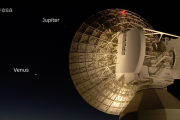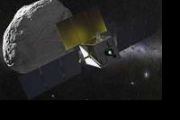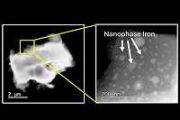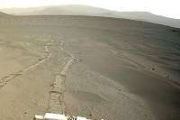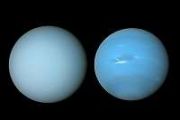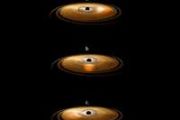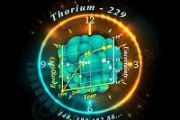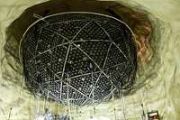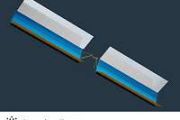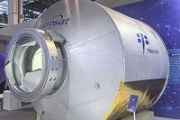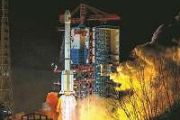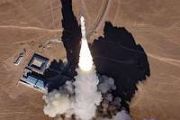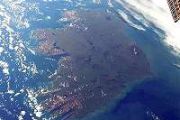
Copernical Team
New MachLab rocket test site launches UK into next phase of space engineering
 A Cold War-era bunker near Scotland's Mull of Kintyre has been repurposed into a state-of-the-art rocket testing and training facility. Known as MachLab, the site has officially opened at a business park on the former RAF Machrihanish airbase close to Campbeltown.
Established by University of Glasgow researchers with nearly Pounds 500,000 in funding-half from the UK Space Agency-MachLab w
A Cold War-era bunker near Scotland's Mull of Kintyre has been repurposed into a state-of-the-art rocket testing and training facility. Known as MachLab, the site has officially opened at a business park on the former RAF Machrihanish airbase close to Campbeltown.
Established by University of Glasgow researchers with nearly Pounds 500,000 in funding-half from the UK Space Agency-MachLab w Diverse rocky planets found around nearby red dwarf including one in the habitable zone
 A Canadian-led team has revealed the most detailed analysis yet of the L 98-59 planetary system, confirming the presence of a fifth planet within its habitable zone. The system, located just 35 light-years from Earth, hosts a strikingly diverse group of rocky exoplanets orbiting a small red dwarf star.
Led by researchers from the Trottier Institute for Research on Exoplanets (IREx) at Univ
A Canadian-led team has revealed the most detailed analysis yet of the L 98-59 planetary system, confirming the presence of a fifth planet within its habitable zone. The system, located just 35 light-years from Earth, hosts a strikingly diverse group of rocky exoplanets orbiting a small red dwarf star.
Led by researchers from the Trottier Institute for Research on Exoplanets (IREx) at Univ CTAO telescope uncovers fresh evidence for layered jet structures in historic gamma ray burst
 The CTAO LST Collaboration has unveiled critical insights into gamma-ray burst (GRB) jets following detailed analysis of GRB 221009A-the most luminous GRB ever observed. The results, published in The Astrophysical Journal Letters, draw from 2022 observations using the LST-1, a prototype Large-Sized Telescope stationed at the Roque de los Muchachos Observatory on the CTAO-North site in La Palma,
The CTAO LST Collaboration has unveiled critical insights into gamma-ray burst (GRB) jets following detailed analysis of GRB 221009A-the most luminous GRB ever observed. The results, published in The Astrophysical Journal Letters, draw from 2022 observations using the LST-1, a prototype Large-Sized Telescope stationed at the Roque de los Muchachos Observatory on the CTAO-North site in La Palma, JunoCam revived by onboard heat treatment just in time for Io flyby
 NASA's Juno spacecraft, currently orbiting Jupiter, narrowly salvaged its onboard JunoCam imager through a remote thermal repair maneuver executed in December 2023. The move, initiated from over 370 million miles away, enabled the camera to capture unprecedented views of Io during a close approach. The repair effort was detailed by mission engineers on July 16 at the IEEE Nuclear and Space Radia
NASA's Juno spacecraft, currently orbiting Jupiter, narrowly salvaged its onboard JunoCam imager through a remote thermal repair maneuver executed in December 2023. The move, initiated from over 370 million miles away, enabled the camera to capture unprecedented views of Io during a close approach. The repair effort was detailed by mission engineers on July 16 at the IEEE Nuclear and Space Radia Young magmas on the came from much shallower depths
 New research on the rocks collected by China's Chang'e 5 mission is rewriting our understanding of how the moon cooled. Stephen Elardo, Ph.D., an assistant professor of Geological Sciences with the University of Florida, has found that lava on the near side of the moon likely came from a much shallower depth than previously thought, contradicting previous theories on how the moon produced lavas
New research on the rocks collected by China's Chang'e 5 mission is rewriting our understanding of how the moon cooled. Stephen Elardo, Ph.D., an assistant professor of Geological Sciences with the University of Florida, has found that lava on the near side of the moon likely came from a much shallower depth than previously thought, contradicting previous theories on how the moon produced lavas First MetOp Second Generation satellite fuelled

The journey to launch is picking up pace for Europe’s MetOp Second Generation weather satellite – which hosts the Copernicus Sentinel-5 as part of its instrument package. Specialists at Europe’s Spaceport in Kourou have completed the critical and hazardous task of fuelling the satellite, marking a major milestone in its final preparations for liftoff.
SpaceX sends up satellites on 2nd launch attempt from Cape Canaveral
This request seems a bit unusual, so we need to confirm that you're human. Please press and hold the button until it turns completely green. Thank you for your cooperation!
Press and hold the button
If you believe this is an error, please contact our support team.
185.132.36.159 : 1964092f-f34e-4fc4-ab5d-f9c02c35
Video: Ignis Mission: Return to Earth
This request seems a bit unusual, so we need to confirm that you're human. Please press and hold the button until it turns completely green. Thank you for your cooperation!
Press and hold the button
If you believe this is an error, please contact our support team.
185.132.36.159 : 62b046cd-1cdc-40d8-8eb3-696ddf69
Surrey launches new Space Institute to drive mission-ready innovation and skills for UK space sector
 The University of Surrey has launched the Surrey Space Institute to address critical skill shortages and accelerate innovation in the UK's Pounds 19 billion space economy. The initiative aims to transform Surrey's 45-year legacy in small satellite development into practical, mission-ready technologies and solutions addressing global challenges like climate change, water security and space susta
The University of Surrey has launched the Surrey Space Institute to address critical skill shortages and accelerate innovation in the UK's Pounds 19 billion space economy. The initiative aims to transform Surrey's 45-year legacy in small satellite development into practical, mission-ready technologies and solutions addressing global challenges like climate change, water security and space susta Nuclear timekeeping may reveal hidden traits of dark matter
 For nearly a hundred years, scientists have sought dark matter, the unseen material believed to account for 80 percent of the universe's mass. Despite extensive efforts-including particle accelerator experiments and cosmic radiation searches-its properties remain largely unknown. Although dark matter doesn't interact directly with light, it may subtly influence visible matter, making it extremel
For nearly a hundred years, scientists have sought dark matter, the unseen material believed to account for 80 percent of the universe's mass. Despite extensive efforts-including particle accelerator experiments and cosmic radiation searches-its properties remain largely unknown. Although dark matter doesn't interact directly with light, it may subtly influence visible matter, making it extremel 











